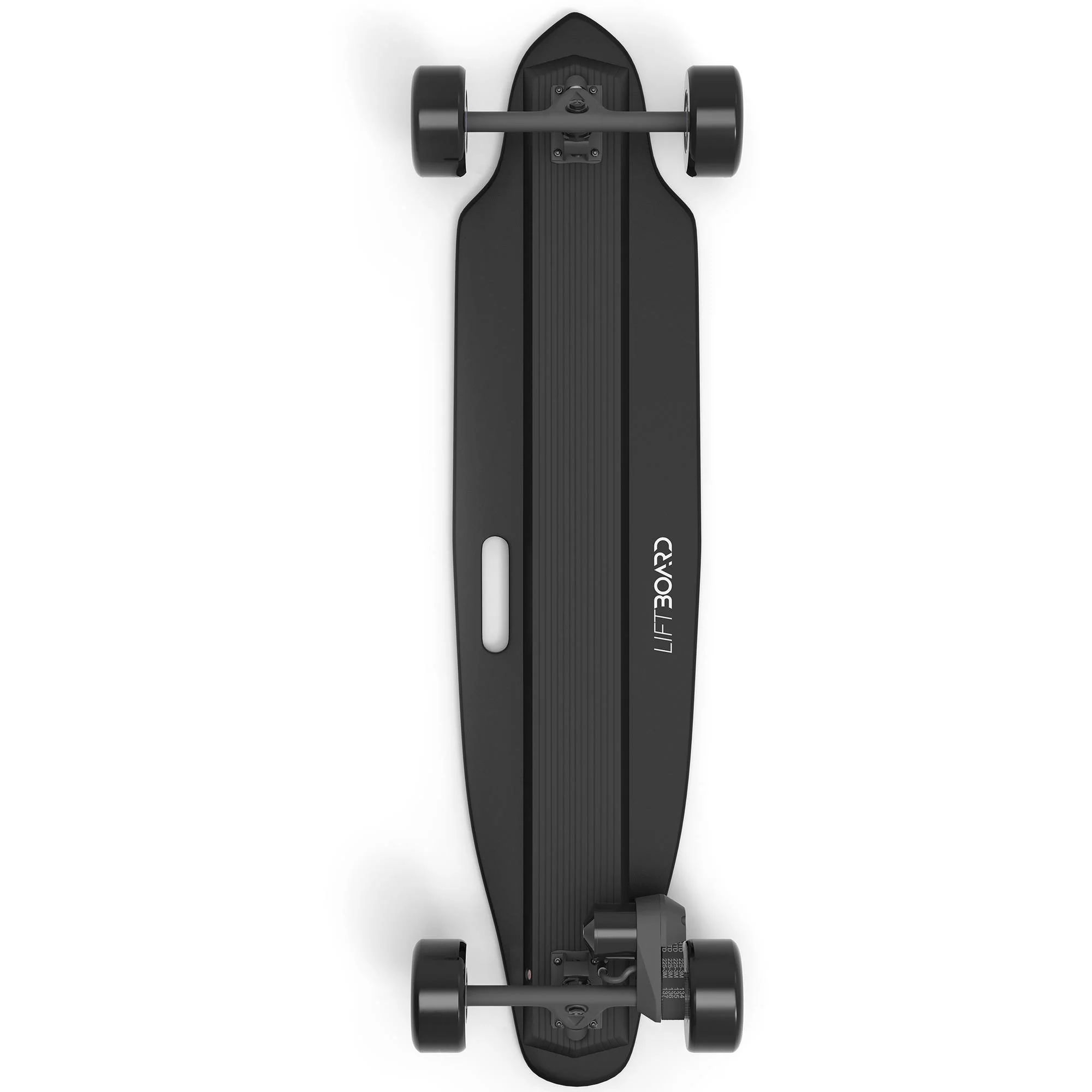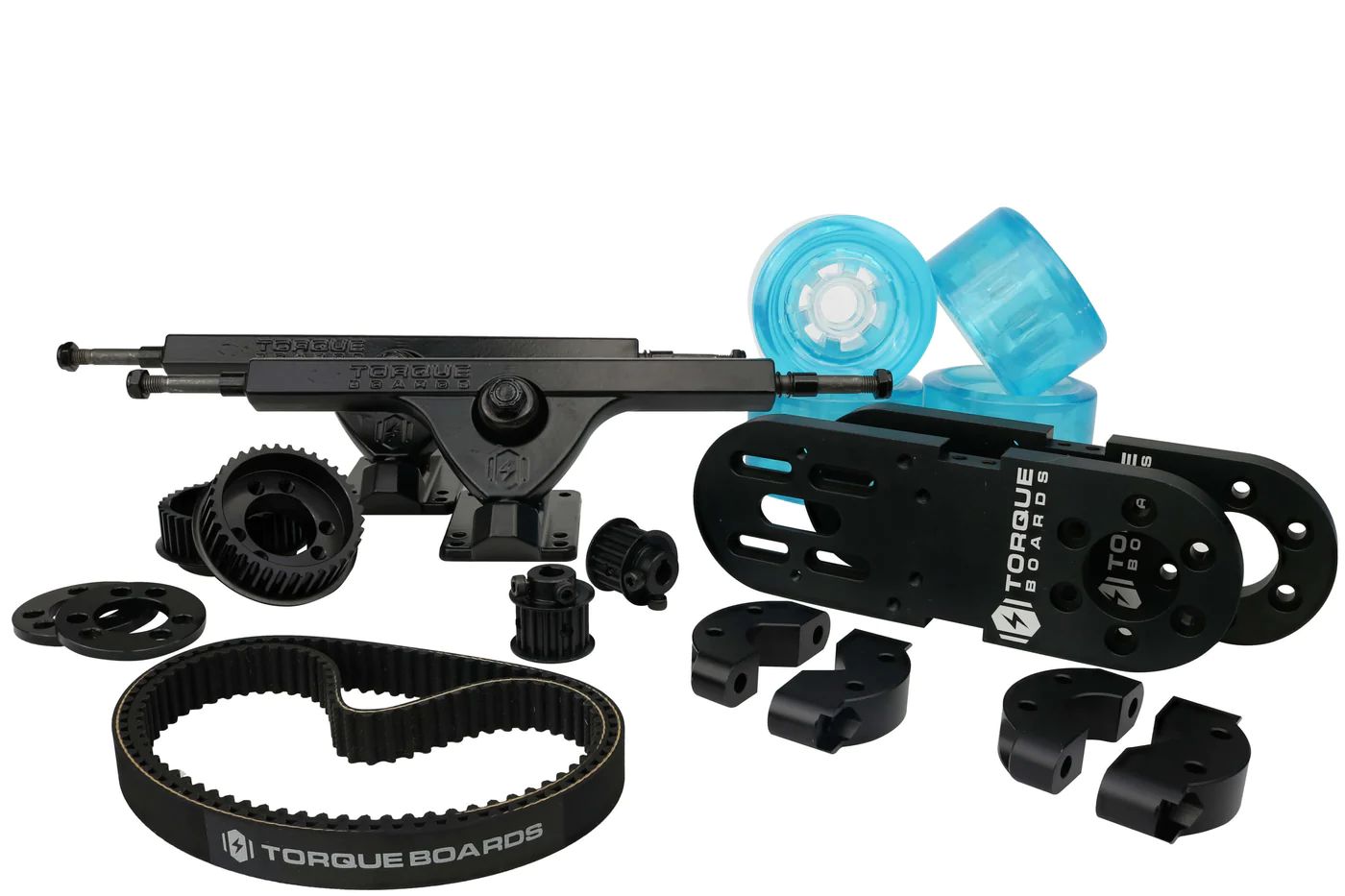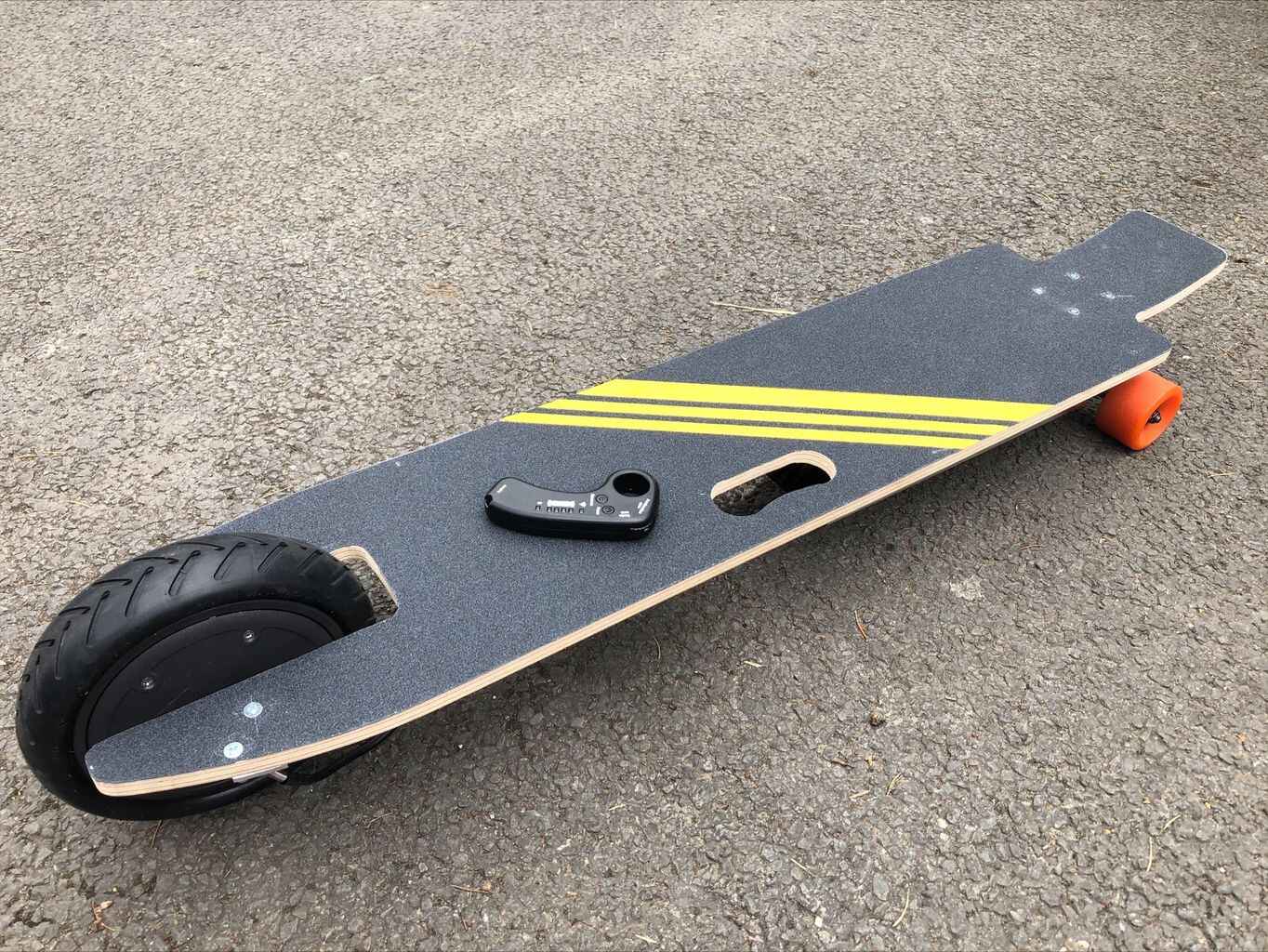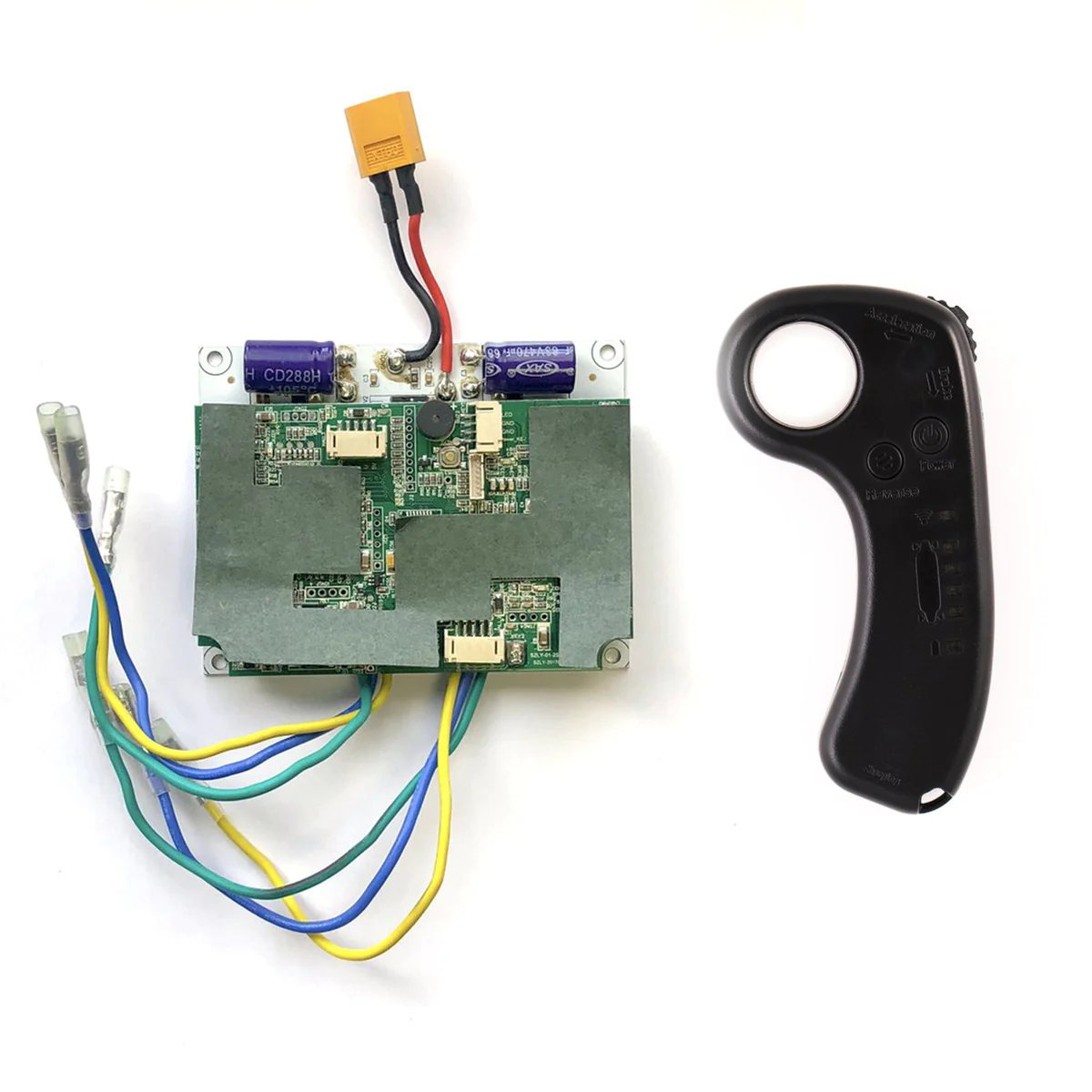Introduction
Welcome to our guide on how to hook up an electric skateboard brushless motor. Electric skateboards have gained popularity in recent years due to their convenience and eco-friendly nature. Whether you”re a seasoned skateboard enthusiast or a beginner looking to upgrade your ride, replacing or installing a brushless motor can greatly enhance the performance of your electric skateboard.
Before we dive into the step-by-step process of hooking up an electric skateboard brushless motor, it”s important to understand the basic principles behind its operation. A brushless motor consists of an outer shell called the stator and an internal rotor with permanent magnets. Unlike traditional brushed motors, which require physical contact between brushes and commutators, brushless motors use electronic commutation to achieve smoother and more efficient power delivery.
By replacing or upgrading your electric skateboard”s brushless motor, you can maximize its speed, torque, and overall performance. Whether you”re looking to reach higher speeds, conquer steeper hills, or simply improve your riding experience, installing a brushless motor is the way to go.
However, please note that working with electric skateboards and their components can be dangerous if proper safety precautions are not followed. Therefore, it is crucial to prioritize safety throughout the entire installation process. Make sure to wear the necessary protective gear, including gloves and safety glasses, and work in a well-ventilated area to prevent any potential accidents or injuries.
In the following sections, we will provide you with a detailed step-by-step guide on how to hook up an electric skateboard brushless motor. From identifying the wires to testing the motor, we”ll cover all the necessary steps to ensure a successful installation. So, let”s get started!
Safety Precautions
When it comes to working with electric skateboards and their components, safety should always be your top priority. By following these safety precautions, you can ensure a smooth and accident-free installation process:
- Wear protective gear: Before you begin the installation, make sure to wear protective gear such as gloves, safety glasses, and a helmet. This will help protect you from any potential injuries from sharp edges, metallic particles, or electrical shocks.
- Work in a well-ventilated area: Ensure that your workspace is well-ventilated to prevent inhalation of fumes or harmful chemicals. If you’re working indoors, consider opening windows or using fans to improve air circulation.
- Disconnect the power source: Before working on your electric skateboard, always disconnect the power source to eliminate the risk of electric shock. If your skateboard has a removable battery pack, remove it completely before starting any installation process.
- Handle wires with care: Avoid pulling or yanking on wires forcefully as it can damage the insulation or result in loose connections. Handle the wires gently and ensure that they are securely fastened to prevent any short circuits or electrical malfunctions.
- Double-check connections: Once you’ve completed the installation, double-check all the connections to ensure they are secure and properly insulated. Loose connections can lead to poor performance or even accidents while riding your skateboard.
- Test the motor in a controlled environment: Before taking your newly installed motor out for a ride, test it in a controlled environment to ensure proper functioning. This will give you the opportunity to identify any issues or make adjustments if necessary.
- Follow manufacturer guidelines: Always consult the manufacturer’s instructions and guidelines specific to your electric skateboard and brushless motor. They often provide valuable information on installation techniques, maintenance tips, and safety precautions.
By adhering to these safety precautions, you can minimize the risk of accidents or injuries while working on your electric skateboard. Remember, safety should never be compromised, so take the necessary measures to protect yourself and others during the installation process.
Required Tools and Equipment
Before you begin the process of hooking up an electric skateboard brushless motor, it’s essential to gather all the necessary tools and equipment. Having the right tools will not only make the installation process smoother but also ensure that you can properly connect the motor and complete the task. Here are the tools and equipment you’ll need:
- Wrench set: A set of wrenches will be needed to remove any nuts or bolts that secure the existing motor to the skateboard. Make sure you have a variety of sizes to accommodate different fasteners.
- Screwdriver set: A set of screwdrivers will come in handy when it comes to removing screws holding the motor in place or securing any wiring connections. Flathead and Phillips head screwdrivers should cover most of your needs.
- Soldering Iron: If your new brushless motor requires soldering wires together, a soldering iron with solder will be necessary. Ensure that you are well-versed in soldering techniques or seek assistance if you are unfamiliar with the process.
- Wire Cutters/Wire Strippers: These tools will help you cut and strip the wires, preparing them for connection. Make sure they are of good quality to avoid damaging the wires during the stripping process.
- Multimeter: A multimeter is an essential tool for ensuring proper electrical connections. It allows you to measure voltages, check for continuity, and troubleshoot any potential issues with the wiring.
- Electrical Tape/Heat Shrink Tubing: To insulate wire connections and provide protection against moisture and accidental short circuits, electrical tape or heat shrink tubing should be used. Both options are readily available and provide reliable insulation.
- Allen Key Set: Depending on the skateboards’ design, you may need an allen key or hex key set for certain motor mounts or other components that require hex screws.
- Cable Ties: Cable ties or zip ties are useful for managing and securing loose wires during the installation process. They ensure a neat and organized setup.
- User Manual/Instructions: Don’t forget to have the user manual or instructions for both the skateboard and brushless motor on hand. These documents provide valuable insights into the specific requirements and guidelines for each component.
Having these tools and equipment ready before starting the installation process will save you time and make the process much smoother. Remember to work with caution and follow any additional guidelines provided by your skateboard and motor manufacturer.
Step 1: Identify the Wires
Before you can hook up the brushless motor to your electric skateboard, it’s crucial to identify the different wires and their functions. Understanding the wiring configuration will ensure that you make the correct connections and prevent any potential damages during the installation process. Follow these steps to identify the wires:
- Refer to the motor’s manual: Start by referring to the manual or documentation provided with the brushless motor. It will typically have a diagram or description of the wires and their corresponding functions.
- Examine the wires: Take a close look at the wires from the motor. You’ll usually find three main wires: the blue, yellow, and green (or sometimes red, yellow, and black). These wires are connected to different motor windings and are responsible for the motor’s operation.
- Identify the power wires: Look for additional wires coming from the motor. These are the power wires that connect to the skateboard’s power source. They are usually red and black or labeled as positive (+) and negative (-).
- Check for additional wires: Some brushless motors may have additional wires for features such as sensors, temperature monitoring, or even regenerative braking. Refer to the manual to understand the purpose and function of any extra wires.
- Take note of wire colors and positions: It’s essential to note down the color and position of each wire to ensure the correct connections later. You can either draw a diagram or make a written record for easy reference during the installation process.
- Verify with skateboard manufacturer’s documentation: To ensure compatibility and proper integration, cross-reference the motor’s wire information with the documentation provided by the skateboard manufacturer. This will help you identify any specific requirements or variations in wiring.
By carefully identifying the wires and understanding their functions, you can proceed with confidence to the next steps of the installation process. Remember to double-check your findings with the provided documentation and seek assistance or clarification if necessary. This will prevent any potential mistakes or compatibility issues during the hookup process.
Step 2: Remove the Old Motor (if applicable)
If you are replacing an existing motor, you will need to remove it before installing the new brushless motor. Follow these steps to safely remove the old motor:
- Disconnect the power source: Before starting any work, ensure that the skateboard’s power source is disconnected or removed. This will prevent accidental activation of the motor during the removal process.
- Locate the motor mounting screws: Identify the screws or bolts that hold the motor in place. These are usually located on the underside of the skateboard near the rear wheels or within the motor casing.
- Use the appropriate tool: Using the appropriate wrench or screwdriver, carefully loosen and remove the mounting screws. Keep them safely aside as they will be used to secure the new motor.
- Gently remove the motor: Once the mounting screws are removed, gently lift and slide the old motor out of its housing. Be cautious not to damage any wires or connectors in the process.
- Disconnect the wires: Take note of the wire connections to the old motor. Carefully detach and disconnect each wire from its respective connector or solder joint. Use caution not to apply excessive force or damage the wires.
- Secure the wires: After disconnecting the wires, secure them or tape them in place to prevent them from getting tangled or lost during the installation of the new motor.
- Inspect for any damage: Take a moment to inspect the old motor for any visible damage or wear. This will help determine if there were any underlying issues that led to its replacement and can inform future maintenance or troubleshooting.
By following these steps, you can safely remove the old motor from your electric skateboard. Take your time during this process to ensure that all connections are properly detached, and the motor is removed without causing any damage. Now that the old motor is removed, you can proceed to the next step of mounting the new brushless motor.
Step 3: Mounting the New Motor
With the old motor removed, it’s time to mount the new brushless motor onto your electric skateboard. Follow these steps to ensure a secure and stable installation:
- Position the motor: Determine the ideal position for the new motor on your skateboard. This will depend on factors such as weight distribution, clearance from the ground, and compatibility with the skateboard’s deck and trucks.
- Align the mounting holes: Align the mounting holes on the motor with the corresponding holes on the skateboard. Ensure that the motor is aligned parallel to the length of the skateboard for optimal performance.
- Insert the mounting screws: Once aligned, carefully insert the mounting screws through the motor’s mounting holes and into the skateboard’s holes. Start by tightening them by hand to ensure proper alignment.
- Tighten the mounting screws: Using the appropriate tool, gradually tighten the mounting screws until they are securely fastened. Be cautious not to overtighten, as this can damage the motor or the skateboard’s deck.
- Ensure proper clearance: Double-check to ensure that the new motor has adequate clearance from the ground and does not interfere with the skateboard’s wheels or other components. If necessary, adjust the motor’s position to achieve the desired clearance.
- Inspect for secure mounting: Once the motor is mounted, gently shake the skateboard to check for any movement or loosening. If there is any noticeable play or instability, tighten the mounting screws further or make any necessary adjustments.
- Review manufacturer’s guidelines: Before moving on to the next step, review the brushless motor manufacturer’s guidelines to ensure that the motor is securely and correctly mounted according to their specifications.
By following these steps, you can successfully mount the new brushless motor onto your electric skateboard. Take your time to ensure proper alignment, secure fastening, and suitable clearance. With the motor securely mounted, you’re now ready to move on to the next step of connecting the motor wires.
Step 4: Connecting the Motor Wires
Now that the new motor is securely mounted, it’s time to connect the motor wires to your electric skateboard. Follow these steps to ensure proper wiring connections:
- Refer to the motor’s manual: Start by referring to the brushless motor’s manual or documentation for the correct wiring configuration. This will ensure that you make the correct connections based on the motor’s specific design.
- Identify the motor wires: Take note of the motor wires you identified in the earlier steps – typically three main wires (blue, yellow, and green) for the motor windings and additional power wires for connecting to the skateboard’s power source.
- Prepare the wires: If the motor wires have any insulation or protective sleeving, gently slide it back to expose a small section of each wire’s bare metal. This will facilitate proper connection and ensure a secure electrical contact.
- Match the wires: Match the motor wires to the corresponding wires or connectors on the skateboard. These connections may include hall effect sensor wires, power wires, or any other additional wires present.
- Solder the connections (if necessary): If the motor wires require soldering to make the connections, ensure you have the appropriate soldering iron and solder. Apply heat to the wire and the connection point, and then melt the solder to create a secure bond. Be cautious of overheating and damaging the wires or other components.
- Secure the connections: Once the connections are made, secure them using electrical tape or heat shrink tubing. This will insulate and protect the connections from moisture, vibration, and accidental short circuits.
- Double-check the connections: Before proceeding, double-check that all the motor wires are connected securely and properly insulated. This will prevent any loose connections or potential electrical malfunctions.
By following these steps, you can ensure that all the motor wires are correctly connected to your electric skateboard. Take your time during this process to ensure that the connections are secure, well-insulated, and match the manufacturer’s guidelines. Once you’re confident that everything is properly connected, it’s time to move on to the next step of securing the motor and checking alignment.
Step 5: Securing the Motor and Checking Alignment
With the motor wires properly connected, the next step is to secure the motor and ensure its alignment on your electric skateboard. Follow these steps to ensure a stable and aligned motor:
- Tighten the motor mounting screws: Double-check that the mounting screws securing the motor to the skateboard are tightened securely. Use the appropriate tool to ensure that the motor is firmly in place.
- Check motor alignment: Examine the alignment of the motor in relation to the skateboard’s deck and trucks. The motor should be parallel to the skateboard’s length and centered between the rear wheels for optimal performance.
- Adjust the motor position (if necessary): If the motor is not aligned correctly, loosen the mounting screws slightly and make the necessary adjustments. This may involve shifting the motor slightly forward, backward, or to the left or right.
- Ensure proper clearance: Verify that the motor has adequate clearance from the ground and other components such as the wheels and trucks. It should rotate freely without any obstructions.
- Inspect for any motor play: Gently shake the motor to check for any play or movement. If there is any noticeable wobbling or instability, tighten the mounting screws further or make additional adjustments to ensure a secure fit.
- Review manufacturer’s guidelines: Before proceeding, review the brushless motor manufacturer’s guidelines and instructions. Ensure that the motor is secured and aligned according to their specifications.
By following these steps, you can confirm that the motor is securely mounted and properly aligned on your electric skateboard. Take your time during this step to ensure a stable and balanced setup. Once you’re satisfied with the motor’s position and alignment, it’s time to move on to the next step – testing the motor.
Step 6: Test the Motor
After completing the installation process, it’s essential to test the motor on your electric skateboard to ensure its functionality. Follow these steps to conduct a proper motor test:
- Reconnect the power source: Make sure that the power source of your electric skateboard is properly connected or reinstalled. Ensure that the battery pack or power cable is securely in place.
- Double-check the connections: Before proceeding, double-check all the motor connections to ensure they are secure and properly insulated. Loose connections can affect the motor’s performance or lead to potential malfunctions.
- Power on the skateboard: Switch on the power to your electric skateboard, following the instructions provided by the skateboard manufacturer. This will activate the motor and enable you to test its functionality.
- Gradually increase the throttle: Slowly and gradually increase the throttle or acceleration on your electric skateboard. Pay attention to how the motor responds and observe any unusual noises, vibrations, or performance issues.
- Test different speed settings: Depending on your skateboard’s controls and settings, experiment with different speed settings to assess the motor’s performance at various levels. Ensure that the motor operates smoothly and delivers consistent power.
- Observe motor temperature: Keep an eye on the motor’s temperature during the testing process. If it starts to overheat or becomes excessively hot, stop the test immediately and address any potential issues before continuing.
- Pay attention to any warning signs: Notice any warning signs such as a sudden loss of power, abnormal noises, or erratic behavior from the motor. These could indicate underlying issues that need to be addressed promptly.
- Test regenerative braking (if applicable): If your electric skateboard has regenerative braking capabilities, test its functionality as well. Gradually apply the brakes and observe how the motor responds and assists in slowing down the skateboard.
By following these steps, you can thoroughly test the functionality of the motor on your electric skateboard. Carefully observe its performance, responsiveness, and any potential warning signs during the testing process. If you encounter any issues or inconsistencies, consult the motor manufacturer’s documentation or seek professional assistance to diagnose and resolve the problems.
Conclusion
Congratulations! You have successfully completed the process of hooking up an electric skateboard brushless motor. By following the steps outlined in this guide, you have upgraded your electric skateboard with a more efficient and powerful motor, enhancing its overall performance.
Throughout the installation process, it is important to prioritize safety by wearing protective gear, working in a well-ventilated area, and double-checking all connections. Taking the time to properly identify the wires, remove the old motor (if necessary), mount the new motor, and connect the motor wires ensures a smooth and reliable installation.
By securing the motor and checking its alignment, you guarantee a stable and balanced setup that contributes to optimal performance. Finally, testing the motor allows you to observe its functionality, responsiveness, and potential warning signs, ensuring that it operates as intended.
Remember, always refer to the manufacturer’s guidelines and instructions specific to your electric skateboard and brushless motor. These guidelines provide valuable insights and recommendations for installation, maintenance, and troubleshooting.
Now that you’ve successfully hooked up your electric skateboard brushless motor, it’s time to hit the road and enjoy an exhilarating ride. Stay safe, obey traffic rules, and have fun exploring the endless possibilities of your upgraded electric skateboard!

























